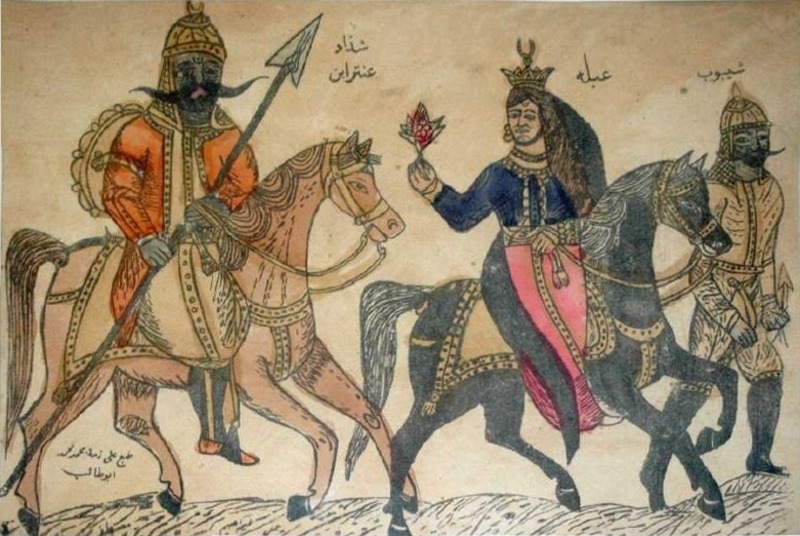Fil:Antarah ibn Shaddad & Abla.jpg
Udseende
Antarah_ibn_Shaddad_&_Abla.jpg (800 × 536 billedpunkter, filstørrelse: 137 KB, MIME-type: image/jpeg)
Filhistorik
Klik på en dato/tid for at se filen som den så ud på det tidspunkt.
| Dato/tid | Miniaturebillede | Dimensioner | Bruger | Kommentar | |
|---|---|---|---|---|---|
| nuværende | 22. jan. 2014, 20:58 |  | 800 × 536 (137 KB) | Carnby | Better crop |
| 29. mar. 2009, 06:01 |  | 777 × 517 (115 KB) | BomBom | cropped image borders | |
| 16. feb. 2009, 00:48 |  | 800 × 536 (129 KB) | BomBom | {{Information |Description=A 19th-century tattoing pattern depicting pre-Islamic Arab hero and poet Antarah ibn Shaddad (left) and his lover Abla (middle) riding horses. The character on the right is called Shayyoub. The inscript |
Filanvendelse
Den følgende side bruger denne fil:
Global filanvendelse
Følgende andre wikier anvender denne fil:
- Anvendelser på ar.wikipedia.org
- شعر عربي
- عنترة بن شداد
- خط الرقعة
- أدب عربي
- ألف ليلة وليلة
- غزل (شعر)
- موسيقى عربية
- حمارة القايلة
- طرب أندلسي
- ثقافة العراق
- عبلة بنت مالك
- حماسة (شعر)
- عصور الأدب العربي
- قالب:ثقافة عربية
- سجاد عربي
- عنترة (مسرحية)
- شيبوب بن شداد
- ثقافة عربية
- مراسم الزواج عند العرب
- مطبخ عربي
- جاز شرقي
- أدب الملحمة العربية
- مستخدم:محمد رشاد ابوالنجا/ملعب12
- فن نبطي
- مستخدم:عمر/ملعب 3
- الفروسية في التاريخ الإسلامي
- مستخدم:EgyAbodggg5g70868
- رموز الشرف عند البدو
- الفن الفاطمي
- جوامع اللذة (موسوعة تراثية)
- مقام (مزار)
- مستخدم:عمر/معلب 4
- قالب:تصفح مقالات مشروع العلمانية والمساواة
- ويكيبيديا:العلمانية والمساواة
- نثر مقفى
- Anvendelser på arz.wikipedia.org
- Anvendelser på az.wikipedia.org
- Anvendelser på bn.wikipedia.org
- Anvendelser på bs.wikipedia.org
- Anvendelser på ca.wikipedia.org
- Anvendelser på de.wikipedia.org
- Anvendelser på en.wikipedia.org
Vis flere globale anvendelser af denne fil.



